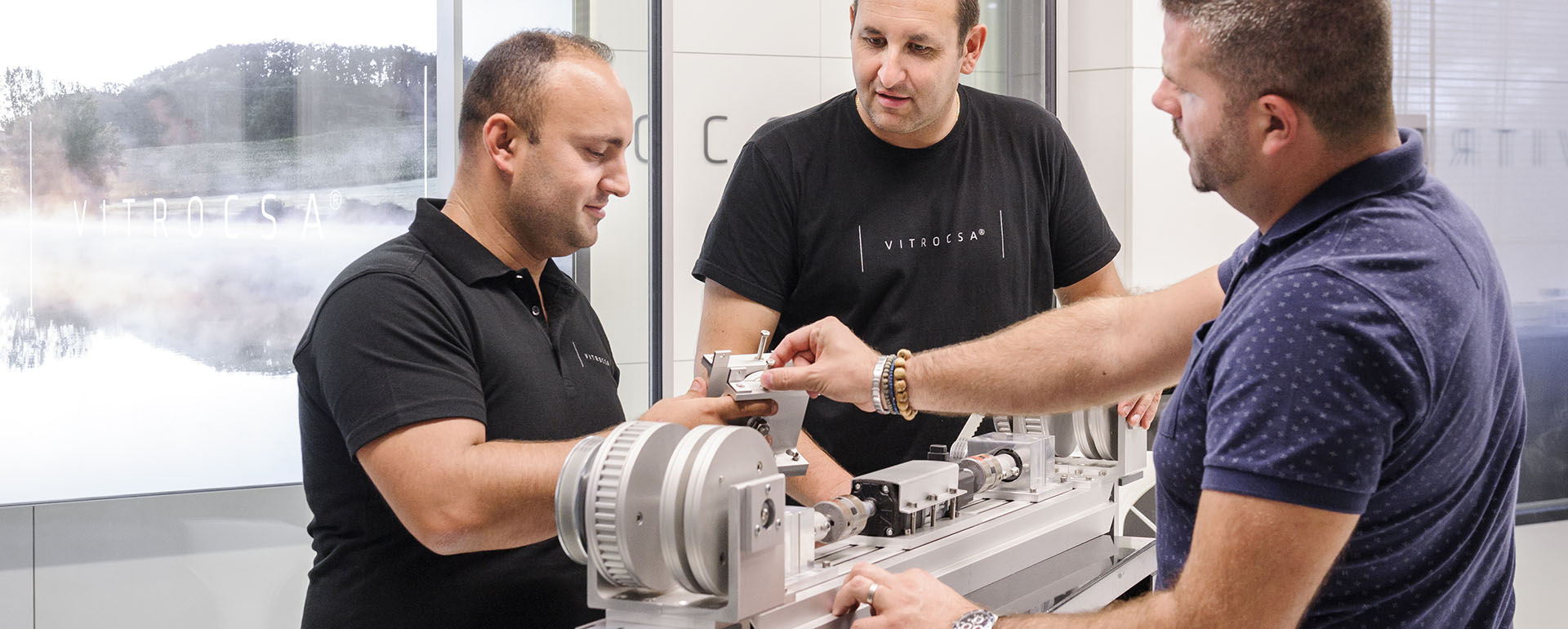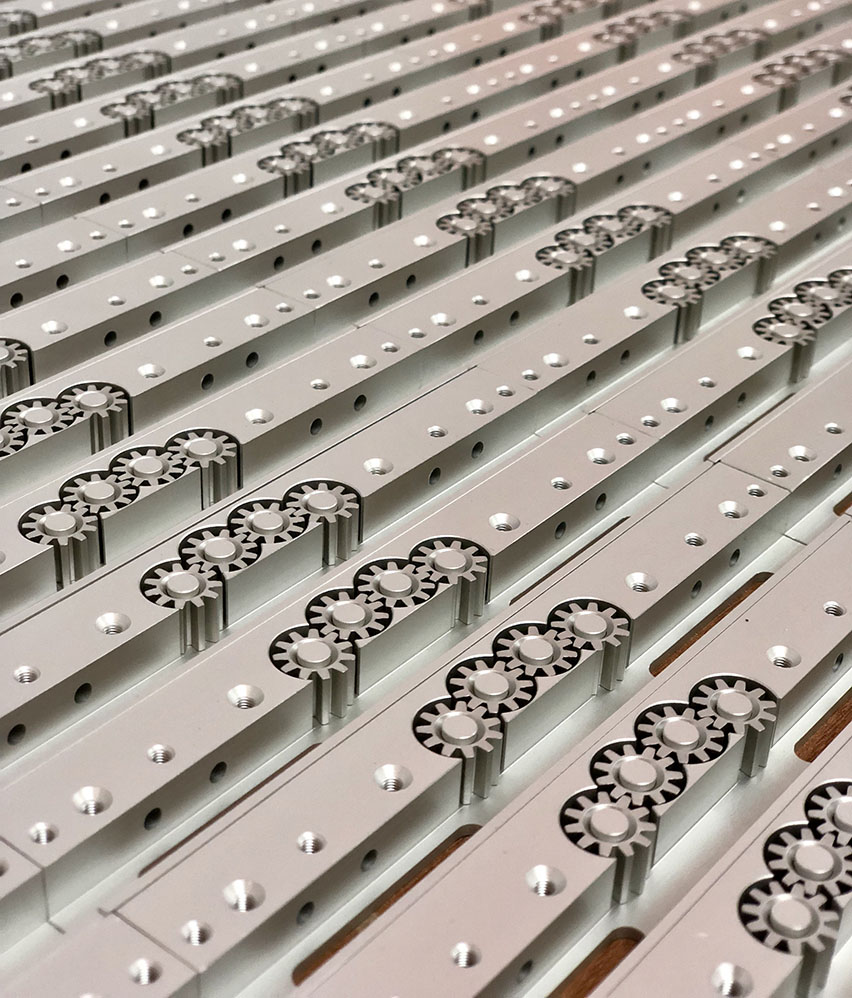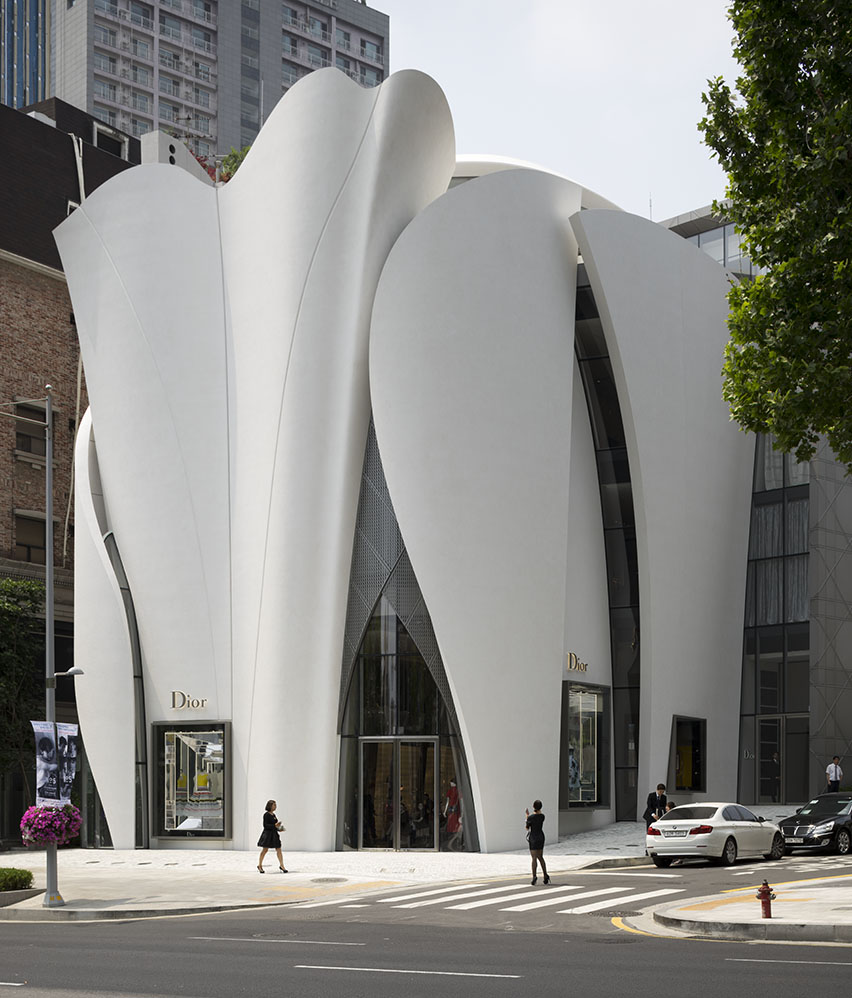
It all started with an orchid
Eric Joray’s professional decisions were guided by his passions. Trained in precision mechanics, he worked in the watchmaking sector for 10 years – a natural choice for this boy from the Neuchâtel mountains. He then became involved in the creation of prefabricated homes. Crucially, this gave him eight years’ experience in the fields of architecture and construction. He then began growing orchids.
Watchmaking, architecture, orchids… three fields brought together by Eric Joray’s passion for beauty, and linked by a simple sentence:
“I love the fact that a craftsman is also a little bit of an artist”.
Having trouble making the link to minimalist windows? Well, where do you grow orchids? In greenhouses and conservatories… with large glazed panels. He combined his expertise to build more than 800 conservatories, marking the first milestone on the journey to his true vocation.
Staying true to his roots, he created the first modern minimalist window in Saint-Aubin-Sauges, Switzerland, in a former watchmaking building that would become his company headquarters. And, true to his values, he employed only those who shared his love of technical mastery and overcoming challenges. The result was Vitrocsa: a contraction of “VITRes” (French for windows), “Orchidées” (orchids), “Constructions” and “SA” (a French abbreviation used by public limited companies). A simple word signifying the vocations of a life built around originality.
 Swissmade
Swissmade
Vitrocsa is an official member of SWISS LABEL, a recognised symbol of quality, safety and reliability for over a century.
All of its micromechanical components and systems are designed in Saint-Aubin-Sauges in Switzerland by technicians trained to watchmaking standards. Vitrocsa windows are manufactured to meet specifications worthy of the most prestigious luxury products:
- Combining traditional expertise and technical innovation
- Attention to detail and accuracy
- Outstanding quality
- Flawless appearance
- Proven durability
Vitrocsa uses more than one thousand exclusive components in its hidden elements, uprights and closure mechanisms, all produced in the same way as high-end mechanical watch parts. Each part is perfect, ideal for its role, allowing the number of system components to be reduced to a minimum. As Leonardo da Vinci said:
“Simplicity is the ultimate sophistication.”
The parts are custom-designed and manufactured, then individually fine-tuned before being assembled using precision systems engineering. Vitrocsa guarantees its products are “zero defect”, made to last a lifetime.
Counterfeiting
Just as Tesla was subject to fraudulent exploitation, so Vitrocsa has seen its products copied and counterfeited. Is this a problem? Not especially… All inventors who have revolutionised their field have encountered it. Plus, this kind of recognition does not faze Vitrocsa. Indeed, high-quality copies help to promote the minimalist window concept and expand its market.
No, the real problem lies in poor imitations.
Not all windows can be a Rolls or a Rolex – that is to say, a Vitrocsa. And, because the complexity of Vitrocsa’s systems, bearings and components has never been equalled, comparable quality is not achieved, and defective copies are commonplace. This issue can really harm the reputation of the minimalist window.
Despite constant patent applications, combating this kind of imitation is extremely difficult. That’s why Vitrocsa certifies the excellence of its products, while relying on the constant innovation that has been a hallmark since its inception.
This approach has enabled Vitrocsa to:
- Establish itself as the pioneer in the market for over 25 years.
- Remain the world leader in minimalist windows.
- Stand out successfully from its competitors, despite their imitation of its original concepts.
Philosophy

No need to say any more about innovation or product quality. These characteristics, inherent to the company, need no further proof. What about the people and their working methods? Simple…
Vitrocsa is a multinational with the attitude of a small firm of craftsmen.
What matters most is a passion for the job and a desire to overcome challenges. We invent, we create, we produce. We design the best solutions to meet the needs of all architects and customers, whether large or small. An entrepreneurial philosophy that Eric Joray has passed on to his team and partners. He describes this way of working in a few words:
“Let people do their thing. Develop a passion for the product, a sense of collaboration and complete confidence.”
All company employees are trained on the job. Management and administrative theory takes a back seat. Each member of staff develops their skills through practical application, progressing and bringing their expertise to the table which, in turn, increases their pride and motivation. Employees think of Vitrocsa products as their own. They feel a shared sense of pride in accomplishing exceptional things with individual autonomy. Each one experiences them as personal successes. The friendly, almost familial atmosphere creates a desire to engage both physically and mentally, not to mention a desire to stay! Most employees have been with the company for between 10 and 20 years.
These are the secrets of a thriving company with a global reach.
While Vitrocsa did not especially seek to expand internationally in its early stages, its approach has enabled it to establish solid partnerships all over the world, helping it to develop. This allows the parent company to focus exclusively on what it does best: research, product development, communication, contacts and training. Its products are installed by exclusive partners who receive training in Switzerland on installation techniques… and the Vitrocsa ethos. Naturally.
It’s an adventure that cannot be conveyed in a few words. To find out the whole Vitrocsa story: its history, values, philosophy, people and ethos…
Skills
Vitrocsa is a close-knit team of reliable, friendly professionals who are always ready with expert responses to individual questions and needs. Please use the contact form to get in touch with us. We will reply as quickly as possible.

History
-
Origins and beginnings
1989
Trained in the rigours of the watchmaking industry, and with a passion for orchids, Eric Joray created the company Orchidées Constructions SA to develop and construct greenhouses and conservatories. More than 800 traditional conservatories were built in just a few years.
-
Origins and beginnings
1992
Eric Joray invented the Vitrocsa minimalist window, entirely manufactured in the Swiss town of Saint-Aubin-Sauges, in a former watchmaking building.
-
Origins and beginnings
1993
Launch of Vitrocsa 1001 and 2001 windows. The first Vitrocsa window was installed in a villa close to Geneva, created by Swiss architect Andrea Bassi.
-
Origins and beginnings
1994
Eric Joray registered the Vitrocsa trademark and the first patent for the Vitrocsa sliding system. All the innovative systems have been developed in-house by the same Research & Development department and patents are filed on a regular basis.
-
First inventions and European market launch
1995
Several traditional conservatories were created using Vitrocsa 2001 windows.
-
First inventions and European market launch
1996
With the collaboration of Swiss architect Andrea Bassi, Vitrocsa came up with a new design for the Vitrocsa 3001 window.
-
First inventions and European market launch
2000
Multiple extensions of homes and new-builds were constructed using Vitrocsa 3001 windows.
-
First inventions and European market launch
2001
The prototype of the pivoting window version of the Vitrocsa 3001 was developed.
-
First inventions and European market launch
2002
Vitrocsa developed the guillotine solution.
To stay true to the goal of remaining a small company, without compromising global growth, Vitrocsa quickly decided to opt for a clear strategy: develop partnerships abroad through licensing agreements.
Vitrocsa entered the European market with the Braga stadium in Portugal, built by architect Eduardo Souto de Moura for the Euro 2004 football championships. -
Consolidation and international expansion
2004
Between 2004 and 2006, new markets opened up, including Russia, Australia, Israel, India, Canada and the United States.
-
Consolidation and international expansion
2007
Launch of the Vitrocsa TH+ range, designed for excellent insulating properties.
-
Consolidation and international expansion
2008
Between 2008 and 2010, Vitrocsa exported to Lebanon and the United Arab Emirates.
-
Consolidation and international expansion
2010
Launch of the Vitrocsa Swimms range designed to meet the needs of hot countries.
-
Consolidation and international expansion
2011
Development of the invisible frame.
-
Consolidation and international expansion
2012
To meet the needs of a project based in Cyprus, Foster + Partners, one of the most renowned architecture firms in the UK, sought an innovative solution for terraces. After extensive tests, the Vitrocsa team developed the revolutionary Turnable Corner system and filed a patent.
Development of the curved application. -
Consolidation and international expansion
2013
Korea and South Africa were added as new export markets.
Several new guillotine solutions were developed between 2013 and 2016. -
Consolidation and international expansion
2014
Vitrocsa won the jury prize and the public prize in the “Products + Access” category for its invisible frame system at the Architizer A+Awards 2014.
Launch of the Vitrocsa V32 range, with thermal reinforcement. -
Developments and achievement
2015
Vitrocsa underwent a major change in its structure. Eric Joray gradually passed the baton to his team. A group of six people was then formed with a view to buying out and taking over the company.
-
Developments and achievement
2016
Vitrocsa became the owner of the watchmaking building located in the Swiss town of Saint-Aubin-Sauges, employing about twenty staff. Worldwide, the brand’s partners selling and installing the product exceeded 500 people.
-
Developments and achievement
2014
Vitrocsa, the original product, celebrated its 25th anniversary, becoming more focused on the future than ever before. Constant innovation to find new solutions ensures the brand’s success. A number of activities and developments were planned throughout the year.
Launch of the Vitrocsa V56 range. It allows infinite glazing surfaces. -
Developments and achievement
2018
Vitrocsa secured a double distinction at the Architizer A+Awards 2018 for its Turnable Corner system:
– Special mention in the “Windows & Doors” category in recognition of the superior quality of its work
– Jury prize in the “Glazing Systems & Facades” category
The company is planning the construction of a new storage and manufacturing hall in Saint-Aubin-Sauges.



